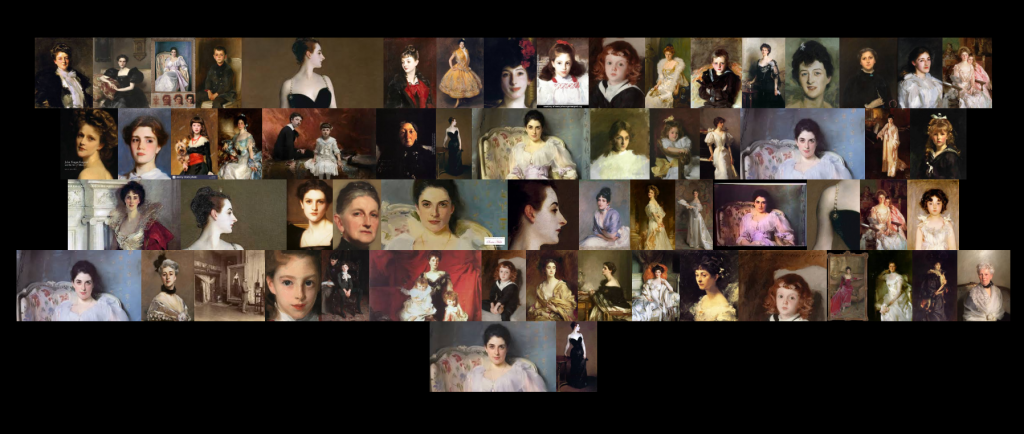
I wanted to create several visualizations using the Chrome plugin, Tableau. I was excited to use it, because it enables the viewer to see a vast array of work in different modes, for example you can zoom in, or view in grayscale. This would enable you to examine brushstrokes, colors, shapes, figures, and patterns. However, I had so much difficulty getting this to work! When I clicked on the download quilt button, nothing happened. Professor Bauer gave me some suggestions, which I tried, but to no avail. So I came up with a temporary solution, which was to take a screenshot of the image, crop it, and upload it here. When I am able to download the image, I will edit the post and add the larger image.
The visualization above is the work of painters Kandinsky and Klee, two Bauhaus artists, who became good friends. As you can see, their styles were similar. I also included Friedrich’s Monk by the Sea painting as well, as we learned it is one of the earliest abstract paintings in Germany, and possibly inspired Kandinsky (I am in the process of researching that potential link).
The quilt below is of my favorite portrait painter, John Singer Sargent. I only included his portraits of women and children, because I wanted to see if his portrait of Madame X is the only portrait painting of a woman he did in profile. From these examples, it certainly looks that way, but I would need to sample images of all his portraits.

Madame X is my second favorite painting of Sargent’s, my first is this one.

The Metropolitan Museum of Art, New York
This was Sargent’s first double portrait, and it depicts the children of playwright Edouard Pailleron and his wife, Marie. His son, Edouard, and daughter Marie-Louise are pictured. Marie-Louise later became a literary figure in her own right, and recounted, (we hope with exaggerration) eighty-three sittings for the portrait, as well as battles about costume and the arrangement of her hair. Sargent has captured Marie-Louise’s unsettling intensity, in an image that departs from conventional Victorian representations of children. Just look at her face — what fierceness!
Visualization software has a lot to offer art historians, especially when working with large amounts of images or text. I hope to become more proficient in using them, so I can better understand all the possibilities.
